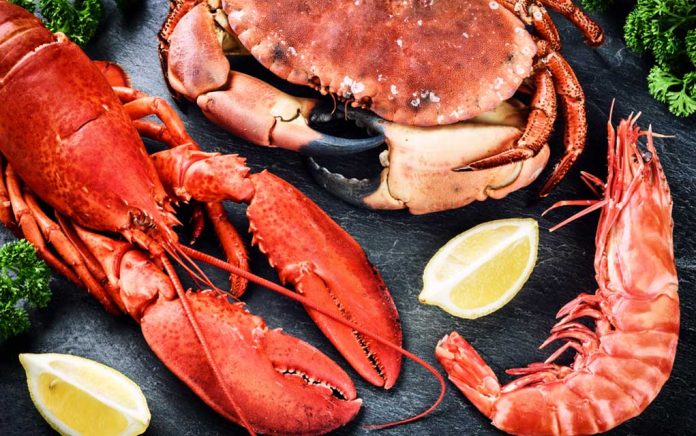
(HealthyResearch.com) – Fish can be a great addition to a healthy diet, and shellfish are no exception. However, just like other varieties of seafood, they might also add a few health risks. We have a breakdown of the different options, as well as some tips to avoid food poisoning, below.
What Are Shellfish?
There are two types of shellfish: crustaceans, which include shrimp, crab and lobster, and mollusks, such as clams, mussels and oysters. Most of these animals live in saltwater environments, although a few freshwater varieties also exist. All types of shellfish have some type of protective shell, which can vary dramatically in hardness depending on the species.
Health Benefits
Most shellfish are high in protein, low in fat and abundant in vital nutrients. For example, a 3-ounce serving of shrimp contains 17 grams of protein. Crab has 15 grams of protein per serving. Lobster is a little lower at 14 grams per serving, but it’s also the lowest in calories — just 64 per serving. The majority of fats in all varieties of shellfish are omega-3s, so unless they’ve been deep-fried or cooked in saturated fats, they’re also an excellent heart-healthy choice.
Time writes that shellfish contain an array of B vitamins as well as trace minerals like selenium. They also provide zinc, copper and magnesium. Some varieties of mollusks, such as blood clams, contain 1.6 times the heme iron as beef liver. Oysters are another excellent source of iron.
Risks to Consider
Shellfish can contain numerous types of bacteria, parasites, viruses and environmental toxins, so safe handling and preparation are important. One study on seafood-related food poisoning found mollusks were responsible for 45.2% of illness, with crustaceans causing about 16%.
Oysters and clams were the biggest offenders among mollusks, with crab and shrimp causing the most illness among crustaceans. Most illnesses caused by shellfish result from the sufferers having eaten raw or improperly cooked food. Healthline warns that Vibrio vulnificus, an infectious bacterium that lives in warm saltwater, can be a problem especially in raw oysters — and hot sauce won’t kill it.
Another growing issue is microplastic contamination. Our oceans have become cluttered with the remains of larger plastic items, and sea life can confuse the particles for food. Some shellfish, like oysters and mussels, are filter feeders, which means they regularly absorb microplastics along with the plankton and other tiny creatures they’re meant to consume. Researchers are concerned about the possible long-term effects of eating animals that absorb large quantities of microplastics.
Avoiding Illness
Reduce the chances of catching a food-borne illness by only eating shellfish that has been stored properly and cooked thoroughly. There’s no benefit to eating any type of fish raw, including oysters, so why take the risk?
Lower the risk of toxins by eating a wide variety of fish and doing so in moderation. One 3-ounce serving of shellfish up to twice per week is likely to be safe.
Shellfish can be a great food choice, but they aren’t risk-free. People with health conditions or impaired immune systems should be especially careful when choosing which types to eat and how to prepare them. The benefits of eating shellfish make them worth adding to the plate — as long as we keep the potential dangers in mind.
~Here’s to Your Health & Safety!
Copyright 2020, HealthyResearch.com
















